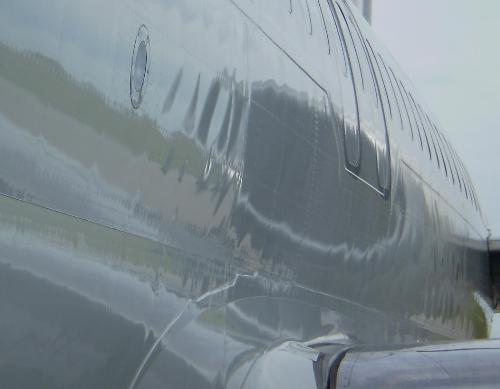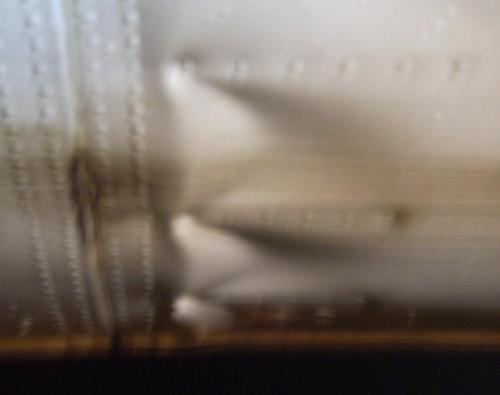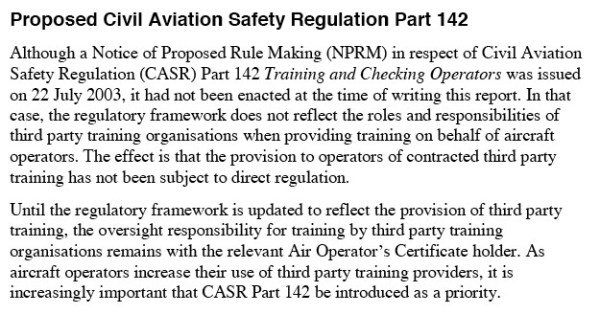 On February 7, 2008, a Qantaslink Boeing 717 was slammed onto the runway at Darwin Airport so hard it deformed and wrinkled the rear of the fuselage sufficiently badly for it to be officially declared an air accident.
On February 7, 2008, a Qantaslink Boeing 717 was slammed onto the runway at Darwin Airport so hard it deformed and wrinkled the rear of the fuselage sufficiently badly for it to be officially declared an air accident.
Of course Qantas insisted at the time that “National Jet [which operated the Qantaslink 717 fleet under contract] was endorsed by Qantas as meeting all of its safety and service standards.”
Let’s hope that was a lie. The ATSB final report into the accident is written in the clinical but often lethal manner that crash investigators in many parts of the world have turned into something of an art.
The Crikey scoop on this hard, oh so hard, landing which left the 94 passengers and crew on board uninjured, comes with much better photos than you will find in the ATSB report.

 But 3.6g’s worth of vertical acceleration, make that vertical stopping, is the sort of boot in the backside that makes you walk wobbly away from a thrill ride at an amusement park, and is not really supposed to be an everyday part of flying.
But 3.6g’s worth of vertical acceleration, make that vertical stopping, is the sort of boot in the backside that makes you walk wobbly away from a thrill ride at an amusement park, and is not really supposed to be an everyday part of flying.
The ATSB report describes how the approach to Darwin was flown in an unstable manner by a flight crew who were trained by third party pilot endorsers who are still outside the scope of effective aviation regulation today.
This was supposed to be fixed in 2003, and lay in CASA limbo right up to the present.

Let me explain why, because the ATSB doesn’t. The airlines, all of them, resist every single administrative or regulatory change that can be seen as in some way adding to costs , and CASA is really good at losing focus in situations like this. Or perhaps was. There are signs, seven years on, that things might be changing, but let’s not get carried away until we see some clear and consistent evidence that this is so.
But back to the approach to Darwin that kicked butt so hard it wrinkled aluminium more than two years ago. The report details a very steep approach, full of sudden changes in descent rate, as the pilots who had the jet too high to join the Instrumental Landing System glideslope at the appropriate moment, tried diving down onto it.
At one stage, at only 167 feet radio altitude, they were dropping the 717 at close to 19.5 feet per second, almost twice as rapid a rate that the FAA deems as capable of generating a 2.1g whack which is the limit above which a thorough hard landing aircraft inspection must be made before the jet can return to service.
When the jet landed it did so on its left main landing gear first at 230 kmh, at a rate of 17.9 feet per second vertical descent, producing a whack of 3.6g. The crew failed to intervene and manually deploy the ground spoilers, resulting in the jet continuing down the runway with the wings still delivering lift when the full weight of the jet should have been transferred to the undercarriage as part of the braking process.
Someone also failed to shut down the power to the black boxes after the jet reached the terminal, for a good two hours, thus recording over and erasing what might have been a rather interesting conversation on the flight deck immediately before and after the landing.
The ATSB notes drily that there was no dedicated 717 training manager at National Jet (but there is now.)
It is cause for reflection that in the early 21st century, air safety regulation was so lax in Australia that Qantas could let out a contract to another operator to fly for it, in Qantas livery, with all the promises made about Qantas standards, yet tolerate a situation where the operator had no chief pilot for 717s, and relied on third party trainers, which were in effect outside the scope of regulation, to produce pilots with the right stuff.
There is too much ‘wrong stuff’ still at play in air transport policy and administration in Australia today. This ATSB report is yet another telling exhibit as to a sorry state of affairs.








Crikey is committed to hosting lively discussions. Help us keep the conversation useful, interesting and welcoming. We aim to publish comments quickly in the interest of promoting robust conversation, but we’re a small team and we deploy filters to protect against legal risk. Occasionally your comment may be held up while we review, but we’re working as fast as we can to keep the conversation rolling.
The Crikey comment section is members-only content. Please subscribe to leave a comment.
The Crikey comment section is members-only content. Please login to leave a comment.